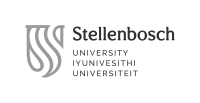F1819 Activism, Social Movements, and Revolution
Professors
Schedule
Course Description
This class will examine efforts to change our world. Activism, social movements, revolution – these varying forms of direct action have always shaped society What can we learn from past examples around the world? From new initiatives? What do scholars in various disciplines have to tell us about social protest in its varying forms? We will begin with baseline introduction from small-scale resistance to single-issue social movements to revolution’s grand drama. This will include examining specific examples worldwide, including Brazil, China, and the United States. We will discuss both the possibilities and perils of collective action along the way. (Which can take forms as scary as the United States’ racist Ku Klux Klan or as largely admirable as the former Czechoslovakia’s Velvet Revolution.) The class will move on to examine the multiple dimensions of social protest – the questions of tactics and strategy, and the development of symbols, narratives, and sometimes leaders. Although some observers deride modern “clicktivism” and its risk-free moral pleasures, it seems clear that no movement can function without a digital dimension any longer. The internet and social media have provided new tools, put to various uses by reinvigorating feminist, environmental, human rights, anti-racist movements among others. We will parse the debates about the uses of social media, including the Arab Spring and Latin American indigenous organizing. The last weeks of the course will examine emerging activist initiatives at a time of nationalist resurgence, anti-immigration sentiment, and doubts about the very future of this small planet.
Learning Objectives
Students will gain some exposure to the great body of scholarship about social movements and revolution, including work from history, sociology, and political theory among others. They will also gain sharper understanding of both the history and present-day challenges of social activism.
Through the examination of particular cases, they will also come away with greater knowledge of multiple areas of the world, including countries in Asia, Africa, and Latin America. The course will take advantage of VIU’s unique international diversity by building in opportunities for students to share and reflect upon social activism’s trajectories in their own home countries
Teaching and Evaluation Methods
Each student will paired with another, and responsible for leading the discussion of the readings at least once during the semester. In addition, a typed, single-spaced page of notes about the readings for that week will be due at the beginning of that week. These notes are a precious device for making sure that students come to class ready to contribute to the discussion. Each student will also be part of a larger group of four that will do a presentation on an example of resistance, social movements, or revolution. There will be two 5-7 page double-spaced papers, and a final exam.
Grades will be calculated as follows:
reading notes/class participation, 25%;
papers, 25% each,
final exam, 25%.
Readings
There will be a number of articles and readings available on the VIU course website. In addition, we will view some short films in class and read all or part of the following books:
James Scott, The Weapons of the Weak
Michael Hardt and Antonio Negri, Empire
Frantz Fanon, The Wretched of the Earth
Donna Haraway, “A Cyborg Manifesto”
Martha McCaughey, Cyberactivism
Ramachandra Guha, Why Gandhi Matters


















